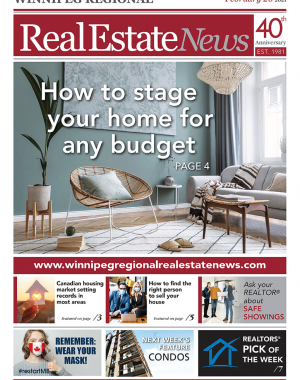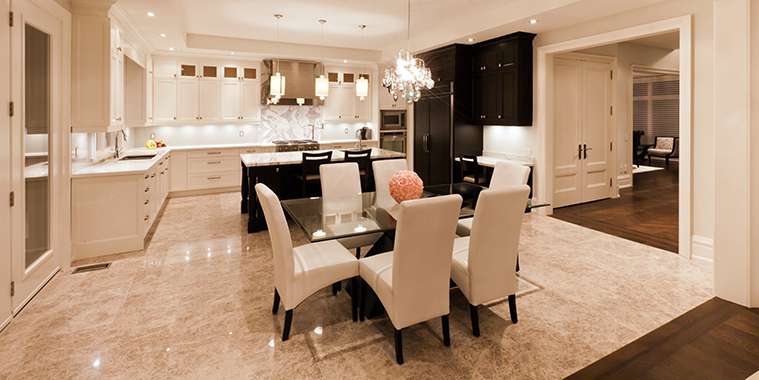There’s no doubt that staging can enhance most homes’ salability and improve pricing and terms. What is in question, however, is affordability. Although full staging is a given in many higher-priced markets, it frequently doesn’t make financial sense for homes in the lower price tiers.
Fortunately, staging has levels, making it possible to leverage the benefits while staying within your budget. If you’re living in your home, levels 1 and 2 apply. If not, the options are levels 3 through 6.
Level 1: Organizational staging
Organizational staging is the most basic and economical because it involves just two steps. Step 1 is decluttering your home. All extraneous items need to be packed and moved out. If you have curio cabinets stuffed full of knickknacks, bookshelves loaded to the max, coffee tables with stacks of items, and family pictures plastered over every available surface, including the refrigerator, that’s a huge turn-off to buyers. Most people can’t see past clutter to the house behind it.
The standard rule of thumb for any shelf or horizontal surface is three items max. All family pictures need to be removed, along with any religious objects. You’re going to pack up when you move anyway, so boxing your stuff up now gets you half way there.
You also want to remove additional pieces of furniture during this stage. Extra pieces that make any room look overstuffed need to go. Downsize large sectional sofas, remove unnecessary elements, take sections out of dining room tables and store the extra chairs. The motto here is “less is more”.
Step 2 involves reorganizing your belongings in a way that maximizes the spaces and showcases the home’s attributes. Once the clutter is gone, you can move pictures, rearrange furniture in rooms and do what you can to open up visual space. Any good REALTOR® will tell you that the way a home needs to show when on the market is usually quite different from how families normally live. They will also tell you that short-term pain will be worth it in the end.
Level 2: Partial staging
This level also involves extensive decluttering, but instead of merely rearranging your belongings, in this level, a staging company augments your belongings with items from its shop’s inventory to maximize the home’s appeal.
This can vary in complexity from adding a few plants, pictures and decorator items, like cushions, in various locations, to bringing in extensive furniture to augment or even replace your items.
This is often a very challenging task because the designer must take an inventory of what is already in your home, along with the wall, flooring and existing accent colours, and then go back to their shop and find items that match. It can also take much longer to do a partial than a standard full stage due to the extra work involved, so don’t expect this to necessarily cost less than a full stage.
Level 3: Vignette staging
If a home is vacant, this represents the entry-level. One of the definitions given by Dictionary.com is “any small, pleasing picture or view.” This level includes no furniture, and staging is limited to highlighting a few key areas of the home with accent pieces, such as a collection of counter items for the kitchen, a grouping of objects on a mantle, a chair and a plant in a corner of the living room, and accents in a bathroom such as towels, and so on.
The idea is to introduce a bit of interest into otherwise sterile rooms. The cost for this type of staging is minimal — it usually involves a single hour, a trip charge and the cost of renting the items for the duration of the listing.
If you have nice decor of your own, you can borrow those items to use in the same way.
Level 4: Symbolic staging
If you are looking for staging that will define what can be done in a given area but cost less than a full stage, symbolic staging utilizing “prop” or “faux” furniture might be the way to go.
Instead of movers handling full-sized furniture, the staging pieces used are made of plastic or cardboard, come in flat carrying cases and are assembled on site. If the home in question is a walk-up or comes with limited access, this might be the way to go.
Although not the same as full staging, this approach helps articulate how a space might be set up without the higher costs of rental furniture or associated labor. CUBIQZ states, “An entire room fits in a car trunk and one person can stage one room in less than 30 minutes.” You just want to make sure no one sits on any of the faux staging pieces!
Level 5: Virtual staging
The way buyers interact with empty versus fully staged homes shows that physical staging is critical.
Buyers, when walking through staged properties, run their hands over the backs of furniture. They sit and gaze around staged rooms to imagine themselves living there. They discuss where a flatscreen TV might be located.
Today’s buyers, having cut their teeth watching home shows on HGTV and, in most cases, having spent considerable time in interior furnishing stores, know what they do or do not like.
Although virtual staging has been around for a while, it’s generally avoided because of the negative reaction of buyers upon visiting a home they thought would be staged but, in reality, is empty. COVID-19 has changed that.
With today’s COVID restrictions affecting buyer access in many parts of the country, the likelihood of a buyer visiting a listing has become increasingly dependent upon the pictures they see online. The expectation is that the photos will show fully upgraded and beautifully staged homes.
There is a place for virtual staging, especially in markets where full staging is not economically viable. The cost of virtual staging is dramatically lower than full professional staging. Additionally, it’s an excellent option for homes where physical access is an issue.
Virtual staging is also a stellar option for properties that will more than likely be on the market for an extended period-of-time. Because most staging comes with stated timelines, the ability to stage once and then have pictures in perpetuity can be appealing.
Level 6: Full staging
Full professional staging has always been the gold standard, and for those who can afford the service, it’s the way to go. Even within full staging, there are numerous options and packages. Some stagers will stage most rooms but leave at least one bedroom empty.
Some packages will only address the primary rooms such as the living room, kitchen, primary bedroom and one bathroom. Others use faux beds in place of hauling in and setting up regular mattresses and box springs. You’ll often see this in show homes, so don’t jump on that bed!
A good staging company can also handle various styles or levels of furniture depending on the type of home and its projected position in the market (entry-level versus luxury). In warmer climes, exterior staging may also be
included.
Whatever the staging level, the goal is always the same — to provide heartwarming, inviting pictures that will propel potential buyers off their couch and rushing to see your home.
— Inman News



